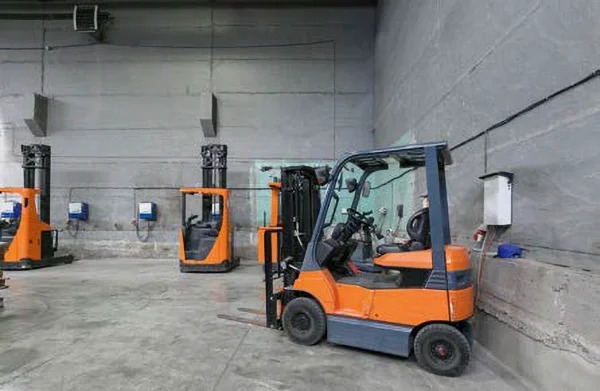Opportunity Charging


Opportunity charging is a practice applicable to both Lead Acid and Lithium-ion (Li-ion) batteries for motive power systems and especially useful for Material Handling (MH) equipment. Fast charging is a key differentiator for Lithium-ion batteries. Because the chemistry allows fast charging without damaging cycle life, our Lithium SAFEFlex Li-ion batteries can be charged opportunistically during breaks and don’t require battery swaps.
Green Cubes’ state-of-the-art Lithium SAFEFlex chargers employ high-frequency technology for the most compact, efficient for the widest voltage range available on the market today. Multiple outputs and automatic voltage detection via CAN communication enable simultaneous charging of multiple trucks with a single utility connection. The modular design allows an entire fleet, from pallet jacks to forklifts, to be serviced, opportunity charging around the clock.
Li-ion batteries are preferably charged using a Constant Current / Constant Voltage (CC/CV) charge regime, but most MH equipment batteries are designed to accept both CC/CV and FLA charge regimens. Regardless of the state-of-charge of the battery when connected to the charger, the battery will efficiently accept the power and increase its state-of-charge. Whether the battery has been connected to the charger for 15 minutes or two hours, that battery can be immediately discharged and used by the MH equipment as there is no need to cool or rest a Li-ion battery after charging.

The Li-ion cell chemistry has numerous chemical variants. Lithium Iron Phosphate (LFP) chemistry is the predominant chemistry used to power MH equipment: LFP features:
The long cycle life means an LFP battery can be installed and remain in the equipment for 8-10 years. More importantly, since LFP chemistry can accommodate high power delivered to and from the battery, a depleted LFP battery can accept a full charge in a little over one hour (i.e. 1 C rate) and it can be delivered throughout the shift when the operator has a break or lunch. Li-ion is the optimal chemistry for opportunity charging.
Best Practices for Opportunity Charging